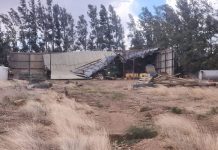From 1990 to 2011, the producer price index (PPI) for wheat increased by 340%. However, during the same period, the all farming requisites index – which includes fertiliser, fuel, animal health and crop protection, maintenance, repairs and farm feed – increased by nearly 604%, according to the NAMC report. Fertiliser and lime contributed between 20% and 29% to total variable input costs, repairs and parts between 9% and 13%, seed 9%, herbicides between 4% and 7%, fuel between 11% and 16% and labour between 6% and 8%.
Between 2000 and 2011, the PPI for wheat seed increased by 326,5% while the PPI for wheat increased only 166,5%. From 2010 to 2011, the wheat seed price index increased by 6,1% and the PPI for wheat decreased by 35%. “Our farmers are getting more and more pressurised by the cost-price squeeze. It is impacting on the profitability and sustainability of South African wheat production,” said Prof André Jooste, NAMC senior manager in the Market and Economic Research Centre.
If wheat producers go out of production because the cost-price squeeze has eroded profitability, we will be completely exposed to volatility on the international wheat market. That is not good for the country.” Less wheat was being planted in SA than last year. “The first intentions to plant wheat for the season, dated 24 April, came in at 547 200ha, 9,5% less than last season’s 604 700ha. We will have to import close to 60% of our local demand this year,” said Grain SA senior economist Corné Louw.
Farmers in the eastern Free State are planting alternative crops such as soya beans. “But they don’t have a winter crop anymore which helped them maximise use of their machinery throughout the year. In regions like the Western and Southern Cape, canola, barley and lupins are being planted but there is no real alternative for wheat. We don’t expect to see as big a decrease in wheat in the Cape as we see up north,” said Louw.
Grain SA applied to the Internation Trade Administration Commission for an increase in the import tariff of wheat a few weeks ago and handed in final comments on 29 June. They are seeking to increase the current price level used to trigger the import tariff from $215/ ton by about $45/ton. “Our wheat harvest is in November/December and we would like to see the tariff increase come through before then,” said Grain SA economist Wessel Lemmer.









